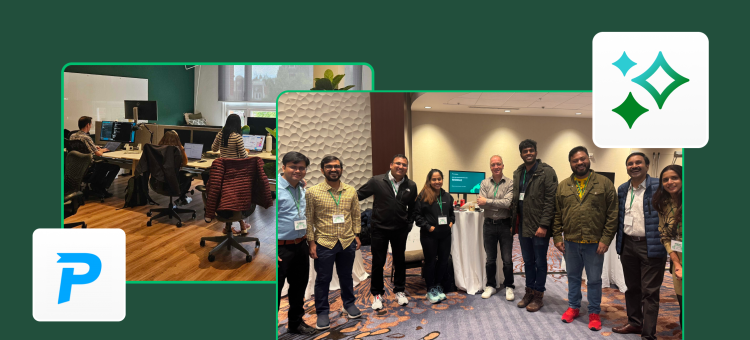In honor of our annual Apps We Love campaign, we’re celebrating SurveyMonkey partners and companies we admire. Whether we’ve collaborated with these companies on joint research, built an integration, or become customers ourselves, we’re big fans of each of these orgs and are excited to share with you.
The most commonly overlooked aspect of diversity and inclusion efforts is inclusion—in part because it’s so difficult to measure.
Measuring diversity is easy—it’s a quantifiable metric based on demographics like gender, ethnicity, and sexual orientation. But inclusion is more of a sentiment than a metric. Do people feel included in their workplace? Do they feel they belong?
Those are harder questions to answer with numbers, but they’re critically important for companies to understand.
The benefits of building a workforce that’s not just diverse, but inclusive, are clear. Numerous studies have shown diversity doesn’t stick without inclusion, and our own research at SurveyMonkey, has found that people from underrepresented groups are more likely to stay in a job where they feel they belong.
SurveyMonkey has built a survey that can help. In partnership with Paradigm, leaders in diversity and inclusion strategy, we’ve developed a set of questions that measure several key dimensions of inclusion, including growth mindset, social inclusion, respect, and path to growth.
The survey is based on research by pioneers in the field who measured inclusion and belonging in the educational system. We’ve taken that framework and applied it to the modern workplace, validating it first by testing in on ourselves and then testing it on the population at large. Here are lessons we learned along the way.
Start building an inclusive workplace
Start measuring inclusion at your company so you can build a diverse workforce that lasts.
Testing the survey on ourselves led to big changes
Testing our survey internally wasn’t just an opportunity to test the validity of the survey, it was our first attempt as a company to look beyond our diversity numbers and measure the lived experiences of our employees at SurveyMonkey.
As we analyzed the survey, we found that some of our results were positive. Across different backgrounds, including underrepresented groups, the majority of our employees felt they were respected, that their voices were being heard, and that they felt valued.
We also uncovered areas for improvement. Particularly when it came to helping our employees understand and visualize their path to career growth and the resolution path of a complaint (i.e. when you bring something forward how is it handled). For these areas, a portion of our population felt negatively and those sentiments were felt even more deeply by employees from underrepresented groups.
Want to build a D&I program?
Our end-to-end guide includes free templates and expert advice for building an inclusive company culture.
Post-survey strategy
Learning about these opportunities for improvement was eye opening and helped inform SurveyMonkey’s 2018 strategies for our D&I Program and for the company.
Once the survey was complete, we wanted to be as transparent as possible, so we shared our key learnings, insights, and areas of opportunity with the entire company. Then, to gain more context and nuance, we hosted open sessions, where we invited everyone to share their thoughts, ideas, and suggestions about the data. When employees feel "in the know" they have a greater sense of belonging and buy-in. We wanted our employees to feel that buy-in and to be part of the decision making process as we came up with solutions.
These open sessions allowed us to better understand how our employees were feeling, what they wanted to see change, and what was going well. From there members of our People team sat down to create a plan, which included:
- Hosting a career month: Career month is dedicated to sharing career resources with employees both online and in person. One online feature, the “Learning Hub,” has become a one stop shop where employees can find online tools, classes, and more to further their career. We also hosted 1:1 career coaching sessions, a career panel, and piloted a mentorship program so employees would feel comfortable reaching out to leaders for guidance and perspective.
- Creating career ladders: Career ladders allow employees to understand on a role-by-role basis, the essential skills and capabilities that are needed for each level in their career if they decide to take a linear path. This helps both employees and the company to attain great results and to create significant impact.
- Conducting a pay equity study: We are committed to equal pay for equal work and we have are currently completing an pay audit to determine if gaps exist among our employees. Once the study is completed we have pledged to correct any issues we find.
- Revamping performance conversations: We're moving away from an annual performance review to a cadence of quarterly conversations that allow us to better focus on feedback, growth and development, while still discussing performance and impact on a more regular basis.
- Leading ERG specific career growth workshops: Our People team will soon begin collaborating with our four employee resource groups (ERGs) to create content around the challenges those groups may face in self-advocacy and career development. Our goal is to identify obstacles and help our employees and managers tackled them together.
- Publishing our employee escalation toolkit: which was created to clearly lay out what happens when an employee brings forward a complaint. From the channels available to bring a complaint forward, to the step by step process of an investigation, to what the follow-up process looks like once an investigation is complete.
Currently, we are half-way through this journey and are continuing to push forward. We know that to be successful here, we need to engage all employees to join us on this journey and we plan to do just that.
What began as a simple test of our inclusion and belonging survey became the north star for a major overhaul of SurveyMonkey’s employee engagement strategy and as we progress we will to continue to listen to our employees and update our methods.
Curious about inclusion at your own organization? Sign in to SurveyMonkey to try the belonging and inclusion template today.


